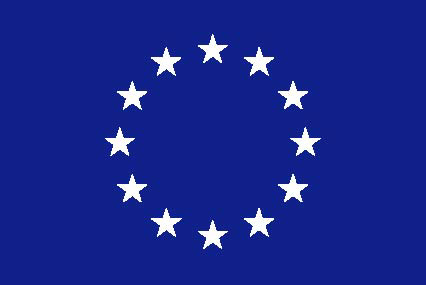The Arrowhead Tools European research project is coming to an end. However, the Eclipse Arrowhead project, which was created in 2020, will continue to build on the results of the research project.
Eclipse Arrowhead Project Lead Jerker Delsing sat down with us to explain what that means, and what’s next for the Arrowhead technologies.
Q. Before we talk about the Eclipse Arrowhead project, can you give us some background on the Arrowhead Tools European research project?
A. The three-year research project was funded by the Key Digital Technologies Joint Undertaking (KDT JU) and coordinated by the Luleå University of Technology. It’s Europe’s largest project focused on solutions in automation and digitization, with a 90-million Euro budget, 53 company partners, and 30+ use cases. It’s also built on the original Arrowhead project, which wrapped up in 2017.
The goal of the research project was to try to drive down engineering costs by enabling automation and digitization in industrial contexts. We were especially focused on edge computing and in improving interoperability in systems of systems.
We decided the ultimate trajectory for the code we were developing should be open source. So, we started the Eclipse Arrowhead project two years ago, and we’re now into our fourth release process as part of the Eclipse Foundation.
Q. Why was it important to have the Arrowhead Tools code be open source?
A. Funding from the various members of the KDT JU got the research project off the ground and the code established. But to ensure the code survives into the future, we knew the Arrowhead Tools project would have to make the transition to the open source community.
Because the code is open source at the Eclipse Foundation, there’s now an ecosystem, or community, of companies that can draw on it to support their own offerings while contributing to its longer term survival and improvement. The Eclipse Foundation governance model was also crucial. It made it possible for us to take the code from its home in the research project, where it was well-established, into an environment where it could continue to be well-maintained into the future.
Q. What’s the latest status of the Eclipse Arrowhead project?
A. One of our major goals is to build up our ecosystem — our community. On March 30, we hosted a webinar where we introduced people to the ecosystem. Basically, joining the community is a way to implement next-generation capabilities in digital transformation and IoT projects while avoiding vendor lock-in. We have ecosystem members from across Europe, many of whom were partners of the Arrowhead Tools research project as well, including:
- AI Digital Solutions
- AITIA
- BEIA
- BNearIT
- Bosch.io
- DAC
- Eurotech
- Evopro
- IncQuery Labs
- Jotne
- Pinterop
- Reply
- Reuse
- Ropardo
- Sinetiq
- ST Microelectronics
- Thingwave
- WAPICE
- Xarepo
On the project side, Eclipse Arrowhead version 4.4.1 is already out, and work on version 4.5 is nearing completion. The main change worth noting in 4.4.1 is that we fixed the Log4J vulnerability. But version 4.5 should be quite interesting as it will include integration with Eclipse Ditto to enable use of digital twins as well as security and engineering improvements.
It’s also worth noting that the code is already being used in commercial situations.
Q. Why is now an exciting time to be part of the Eclipse Arrowhead ecosystem?
A. We know that in some use cases, particularly for large-scale industrial users, the Eclipse Arrowhead code can lead to enormous cost savings.
A good example is Infineon. They were installing some new sensors in their production line. Normally, it would’ve taken them about seven weeks to get everything up and working. Leveraging some of the Eclipse Arrowhead code, they did it in a day.
In general, we’ve found very substantial savings: from 30 percent to as high as 95 percent in specific use cases. These are numbers that can’t be ignored. And there are good signs that several players are picking up on these benefits.
So, now that the technology is mature and well-supported, we want to take it to the next level, with even greater levels of support and training. After seeing numbers like this, many more companies are gearing up to help take Eclipse Arrowhead even further to help it mature even more.
Q. What are the business benefits for companies that join the Eclipse Arrowhead ecosystem?
A. The ecosystem provides a forum for companies to cooperate, while still retaining their own expertise and tools. Many projects currently on the market are at a point where companies really need to cooperate on bids. So, they’ve been looking at ways to cooperate: what’s going to be the nature of the relationship, and how can we agree to work together? The ecosystem provides this. And then, because the code is at the Eclipse Foundation, each company can draw on it to develop their own unique offerings.
Jotne A/S, a Norwegian company that specializes in digital twins, is a good example of how this collaboration can help drive innovation. They recently released a library where users can adapt or connect any ISO 10303-compliant tool to Arrowhead, so they can be used in a larger context.
Q. What’s next for Eclipse Arrowhead?
A. In addition to the integration with Eclipse Ditto, we’re working on a demo that gives the power of signing off on a contract to a machine in a trustable way. And we’re working on adapters to extend Arrowhead’s interoperability with more legacy systems.
At the same time, we’re also doing extensive road-mapping and looking further down the road. The roadmap for version five is well on its way, and we’ll be looking to further improve the maturity and robustness of the core systems.
Q. And what about the bigger picture? How will you ensure the Eclipse Arrowhead technologies continue to meet industry needs for years to come?
A. We’re also in the process of putting together a proposal for a working group, centered around Industry 4.0. The idea has been in talks for the last two years since we first brought Arrowhead to the Eclipse Foundation. Now that we’ve had industry players coming together, working together business-wise, but also to ensure the long-term development of the code and how to fund that development, we feel we’re in a better position to get the commitment we need to launch a working group.
A working group provides the vendor neutral governance and ecosystem development the project can really benefit from. It would set the stage for broader collaboration among all different types of stakeholders in Industry 4.0 technologies, including Eclipse Arrowhead, other Eclipse Foundation projects, and perhaps new projects as well. We’re much closer to having the buy-in to make it happen.
Q. How can people get involved in Eclipse Arrowhead?
A. They can send us an email at ecosystem@arrowhead.eu or get in touch with our project leads. We welcome everyone with an interest in systems of systems automation to join our ecosystem.
Arrowhead Tools has received funding from the ECSEL Joint Undertaking (JU) under grant agreement No 826452. The JU receives support from the European Union's Horizon 2020 research and innovation programme and Sweden, Spain, Poland, Germany, Italy, Czech Republic, Netherlands, Belgium, Latvia, Romania, Hungary, Finland, Turkey, and Switzerland.
|
|
 |




